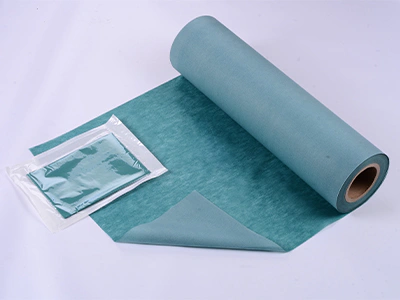When you open your wardrobe, you are surrounded by a multitude of fabrics, each with its unique texture and purpose. However, have you ever stopped to wonder about the origins of the fabric you are wearing? Non-woven fabrics, in particular, are a fascinating part of the textile industry. In this section, we will delve into the art and science of non-woven fabric production, gaining insights into the manufacturing practices that bring these textiles to life.
Non-Woven Fabric Formation: Engineering Textile Innovations
Non-woven fabrics are engineered textiles that are formed by bonding fibers together without going through traditional weaving or knitting processes. Instead, various techniques are used during manufacturing to create layers of fibers or filaments, which are then mechanically, chemically, or thermally bonded together. This results in a fabric that possesses unique characteristics such as strength, durability, and versatility.
The Artistic Prelude: Raw Material Selection and Treatment
The art of non-woven fabric production involves meticulous planning and innovative thinking. Manufacturers start with a careful selection of raw materials, ranging from natural fibers like cotton and wool to synthetic materials such as polyester and polypropylene. These raw materials are then treated and processed to prepare them for the manufacturing stage.
Spinning Bonds: The "Spunbond" Technique
One of the most common techniques used in non-woven fabric production is called the "spunbond" process. This method involves extruding continuous filaments of molten polymer onto a conveyor belt. The filaments are then bonded together using heat and pressure, creating a resilient and non-directional fabric. This particular technique is commonly used in applications such as geotextiles, agriculture, and disposable medical products.
Filtration Marvels: The "Meltblown" Process
Another widely used technique is the "meltblown" process. In this method, high-velocity air is used to draw polymer melt into fine fibers, which are then collected on a moving surface to form a fabric. Meltblown fabrics are known for their filtration properties and are commonly used in medical masks, air filters, and oil-absorbent materials. The art lies in controlling the variables such as temperature, pressure, and airflow to achieve the desired fabric characteristics.
Ensuring Quality: The Scientific Dimension of Non-Woven Fabric Manufacturing
Once the fabric is formed, the science behind non-woven fabric manufacturing comes into play. Quality control is a crucial aspect of the production process, ensuring that each batch of fabric meets the required specifications. Advanced testing equipment is used to assess properties such as tensile strength, tear resistance, air permeability, and absorbency. Manufacturers also conduct rigorous quality checks to ensure that the fabric is free from defects and meets the intended application standards.
Sustainable Evolution: Meeting Market Demands and Environmental Responsibility
To cater to diverse market demands and environmental concerns, non-woven fabric manufacturers are continually exploring sustainable practices. This includes incorporating recycled fibers, reducing energy consumption, and minimizing waste during the production process. Additionally, advancements in technology have led to the development of biodegradable non-woven fabrics, contributing to a more sustainable future.
In Conclusion: The Harmony of Art and Science
In conclusion, non woven fabric manufacturer is a delicate balance of art and science. From the selection of raw materials to the fine-tuning of production techniques, countless decisions and considerations go into creating these versatile textiles. By understanding the behind-the-scenes processes, we can appreciate the craftsmanship and innovation that bring non-woven fabrics into our everyday lives. So the next time you put on a garment or use a product made from non-woven fabric, take a moment to reflect on the intricate journey it undertook to become a part of your world.


No comments:
Post a Comment
Note: Only a member of this blog may post a comment.